Reference IPE: Chassis and Suspension Strength and Durability
Problem Statement:
Model build operations such as modeling and meshing are the most time-consuming tasks for any chassis and suspension engineer.
Reasons for this claim:
- Let’s take an example of a vehicle chassis sub-frame. Out of the total Finite Element modeling time, a CAE engineer takes about 10 days to complete the model-build operations for the sub-frame (two different Automotive OEMs shared these times with us). Out of this time, the engineer spends about 40% in meshing and 40% in connection definition. If these connections involve seam weld creation, the time is extended further by a few more days.
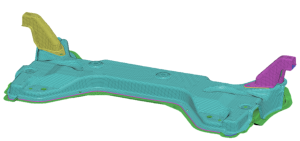
- Modeling seam welds is the most time-consuming process for an analyst if shell elements share nodes and element edges at the seam. Based on the feedback we received from a client, an expert requires about 3 days to completely model all the seam welds in a chassis subframe.
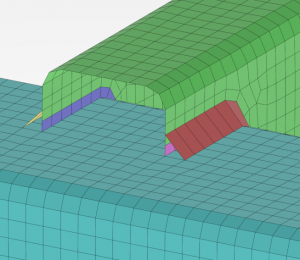
Every industry has weld certification guidelines to meet durability and safety standards. Weld lines also contribute to product weight and cost – this is a big area of concern for OEMs and CAE engineers, who have to spend a great deal of effort to optimize the weld lines and parameters. Modeling these welds and maintaining mesh flow around them is a time-consuming process if done manually. For each design iteration, most of these modeling steps are repetitive. Here are few examples:
- Re-meshing of parts and weld meshes with location changes to address issues in packaging.
- Part thickness changes for robust and reliable design
- Re-meshing and connections creation for parts if additional pockets, beads, and stiffeners added
To summarize the solution requirements and benefits:
If We provide a solution that automates meshing, section creation, material assignment, and seam weld creation operations, it can lead to reducing the modeling time from days to hours.
If We maintain digital continuity between the CAD and FEM models, it will ensure seamless updates to the FE model when required for design iterations.
If We provide a guided approach to automate mid-surface extraction and weld lines creation, it has the potential to democratize the modeling activities such that the user does not require specialist meshing skills.
Solution:
- An automation tool with a guided user interface has been developed that automates time-consuming tasks such as mid-surface extraction, rule-based meshing operations for a good quality mesh, section properties assignment, and seam weld creation.
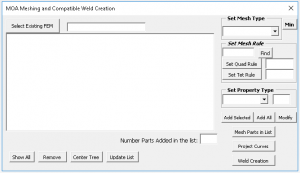
- By using this automation tool, engineers are able to reduce the modeling time of the sub-frame shown below from 16 hours to just 2 hours.
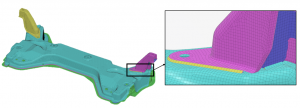
- Associativity between your CAD and FEM is maintained in each step, which helps you to replace, move, or modify your parts without the need for considerable rework.
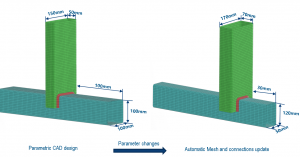
Conclusions:
- Automating the meshing and modeling process improves the productivity by up to 10X. Hence, CAE engineers can spend more effort in weld optimization and validation than in modeling.
- Maintaining a link between CAD and FEM eases the process of making design changes. This reduces repetitive work resulting from design iterations.
- The guided approach leads to freeing up time for the expert analysts, since these workflows can now be executed by design engineers. Initial modeling steps like mid-surface extraction and curve creation are now done during the design phase itself.
So, are you excited to let our automation tool take care of your repetitive tasks and improve your productivity? We are certainly excited to show it to you!
See our Transportation & Mobility simulation solutions by visiting: https://www.3ds.com/products-services/simulia/solutions/transportation-mobility/
SIMULIA offers an advanced simulation product portfolio, including Abaqus, Isight, fe-safe, Tosca, Simpoe-Mold, SIMPACK, CST Studio Suite, XFlow, PowerFLOW and more. The SIMULIA Learning Community is the place to find the latest resources for SIMULIA software and to collaborate with other users. The key that unlocks the door of innovative thinking and knowledge building, the SIMULIA Learning Community provides you with the tools you need to expand your knowledge, whenever and wherever.

